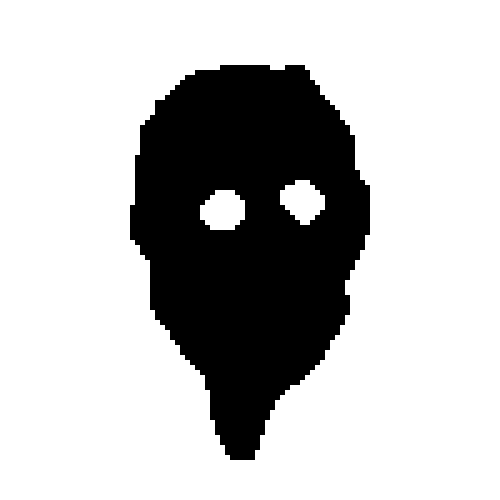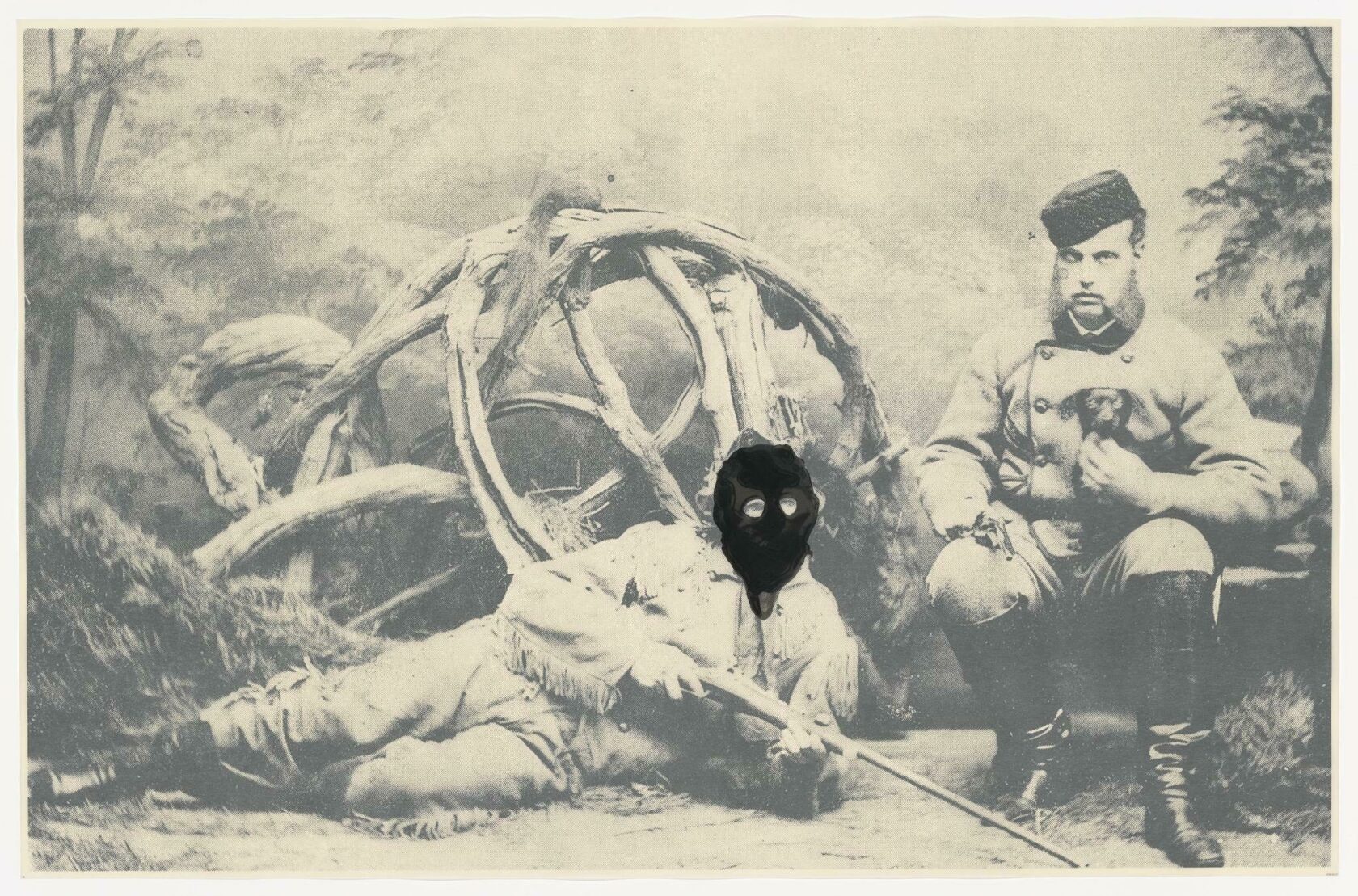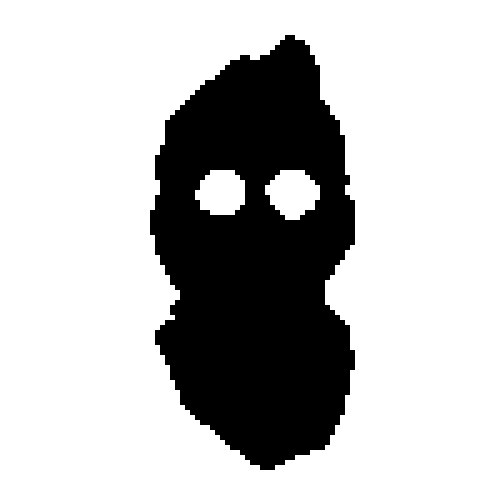UNTITLED PIXEL PORTRAIT
NFT COLLECTION
ON THE FOUNDATION
NFT COLLECTION
ON THE FOUNDATION













Untitled Pixel Portrait (UPP) is a homage. A reinterpretation. A new continuation of the renowned artist Adam Helms' Unnamed Portrait.
This series take their start from old photographs. The photographs that fell into Adam's hands and took on a new form. They moved to a different stage with new meaning and ideas.
When I first saw this series, I decided to continue its metamorphosis and its change in a new, modern, digital, and primitive environment that's closer to me. While keeping the main element - the masks - as the blurry, fading memories about the people, nevertheless still conveying their essence and spirit.
All this is closely related to the primitive, simplifying method of execution. As the new images in digital contemporary art have run too far ahead, but this has happened too rapidly and they didn't have enough time to form their own new fundamental foundations. So the pixels are still remaining the basis of all modern art.
In addition, I also pursued the idea of creating a bridge from the so called "familiar" (Nameless Portrait) to the "digital" UPP as a form of a new art kind, digital primitivism. Surprisingly, the gap between the "familiar" and pixels feels smaller — compared to the gap between the "familiar" and what we call a contemporary, modern digital art.
I am very grateful to Adam Helms for his assistance.
I hope when the time comes for a new form of artists' self-expression, the Nameless Portrait will find itself in the future and be reborn in a new form again.
___
In the modern technology world, we have instant access to all information, but not knowledge. There is too much information that its availability equals its absence. Too many tastes always kill the flavor.
We have endless photos, electronic media, messages, posts, audio, but our ability to remember has decreased. We have dull memories.
Was everything more meaningful when we wrote real letters on real paper using real ink, instead of the digital? Were those speeches more real, when they were not digital? Were the images taken with film cameras more real? Did the characters have other stories that were more real?
This NFT collection is a metaphor for the rebirth of information from its first original form (real photographs taken in different places by different people and carrying different stories...with imprints of their experiences and destinies) to the photos with their faces covered with masks and then to those primitive pixeled masks themselves.
Shouldn't we be seeing them better? Why is it more difficult to see them now and know their stories?
From real to a couple of pixels — that's how the digital world has changed us.
This series take their start from old photographs. The photographs that fell into Adam's hands and took on a new form. They moved to a different stage with new meaning and ideas.
When I first saw this series, I decided to continue its metamorphosis and its change in a new, modern, digital, and primitive environment that's closer to me. While keeping the main element - the masks - as the blurry, fading memories about the people, nevertheless still conveying their essence and spirit.
All this is closely related to the primitive, simplifying method of execution. As the new images in digital contemporary art have run too far ahead, but this has happened too rapidly and they didn't have enough time to form their own new fundamental foundations. So the pixels are still remaining the basis of all modern art.
In addition, I also pursued the idea of creating a bridge from the so called "familiar" (Nameless Portrait) to the "digital" UPP as a form of a new art kind, digital primitivism. Surprisingly, the gap between the "familiar" and pixels feels smaller — compared to the gap between the "familiar" and what we call a contemporary, modern digital art.
I am very grateful to Adam Helms for his assistance.
I hope when the time comes for a new form of artists' self-expression, the Nameless Portrait will find itself in the future and be reborn in a new form again.
___
In the modern technology world, we have instant access to all information, but not knowledge. There is too much information that its availability equals its absence. Too many tastes always kill the flavor.
We have endless photos, electronic media, messages, posts, audio, but our ability to remember has decreased. We have dull memories.
Was everything more meaningful when we wrote real letters on real paper using real ink, instead of the digital? Were those speeches more real, when they were not digital? Were the images taken with film cameras more real? Did the characters have other stories that were more real?
This NFT collection is a metaphor for the rebirth of information from its first original form (real photographs taken in different places by different people and carrying different stories...with imprints of their experiences and destinies) to the photos with their faces covered with masks and then to those primitive pixeled masks themselves.
Shouldn't we be seeing them better? Why is it more difficult to see them now and know their stories?
From real to a couple of pixels — that's how the digital world has changed us.
Untitled Pixel Portrait #1
Kunta Ayubi
Untitled Pixel Portrait (North Plains)
2022
Untitled Pixel Portrait (North Plains)
2022



UNTITLED PIXEL PORTRAIT #2
Kunta Ayubi
Untitled Pixel Portrait (Western Texas)
2022
Untitled Pixel Portrait (Western Texas)
2022



UNTITLED PIXEL PORTRAIT #3
Kunta Ayubi
Untitled Pixels Portrait (Clay County)
2022
Untitled Pixels Portrait (Clay County)
2022



UNTITLED PIXEL PORTRAIT #4
Kunta Ayubi
Untitled Pixels Portrait (Lawrence)
2022
Untitled Pixels Portrait (Lawrence)
2022



UNTITLED PIXEL PORTRAIT #5
Adam Helms
Untitled Portrait (Little Bighorn)
2007
Untitled Portrait (Little Bighorn)
2007
Kunta Ayubi
Untitled Pixels Portrait (Little Bighorn)
2022
Untitled Pixels Portrait (Little Bighorn)
2022



UNTITLED PIXEL PORTRAIT #6
Adam Helms
Untitled Portrait (Santa Fe Trail)
2007
Untitled Portrait (Santa Fe Trail)
2007
Kunta Ayubi
Untitled Pixels Portrait (Santa Fe Trail)
2022
Untitled Pixels Portrait (Santa Fe Trail)
2022



UNTITLED PIXEL PORTRAIT #7
Adam Helms
Untitled Portrait (Wilson's Creek)
2007
Untitled Portrait (Wilson's Creek)
2007
Kunta Ayubi
Untitled Pixels Portrait (Wilson's Creek)
2022
Untitled Pixels Portrait (Wilson's Creek)
2022



UNTITLED PIXEL PORTRAIT #8
Adam Helms
Untitled Portrait (Srebrenica)
2007
Untitled Portrait (Srebrenica)
2007
Kunta Ayubi
Untitled Pixels Portrait (Srebrenica)
2022
Untitled Pixels Portrait (Srebrenica)
2022



UNTITLED PIXEL PORTRAIT #9
Adam Helms
Untitled Portrait (Northfield)
2007
Untitled Portrait (Northfield)
2007
Kunta Ayubi
Untitled Pixels Portrait (Northfield)
2022
Untitled Pixels Portrait (Northfield)
2022



UNTITLED PIXEL PORTRAIT #10
Adam Helms
Untitled Portrait (Mecca)
2007
Untitled Portrait (Mecca)
2007
Kunta Ayubi
Untitled Pixels Portrait (Mecca)
2022
Untitled Pixels Portrait (Mecca)
2022



UNTITLED PIXEL PORTRAIT #11
Adam Helms
Untitled Portrait (Vedeno)
2007
Untitled Portrait (Vedeno)
2007
Kunta Ayubi
Untitled Pixels Portrait (Vedeno)
2022
Untitled Pixels Portrait (Vedeno)
2022



UNTITLED PIXEL PORTRAIT #12
Adam Helms
Untitled Portrait (Chechnya)
2007
Untitled Portrait (Chechnya)
2007
Kunta Ayubi
Untitled Pixels Portrait (Chechnya)
2022
Untitled Pixels Portrait (Chechnya)
2022



Adam Helms
Untitled Portrait (Grozny)
2007
Untitled Portrait (Grozny)
2007
Kunta Ayubi
Untitled Pixels Portrait (Grozny)
2022
Untitled Pixels Portrait (Grozny)
2022



UNTITLED PIXEL PORTRAIT #13